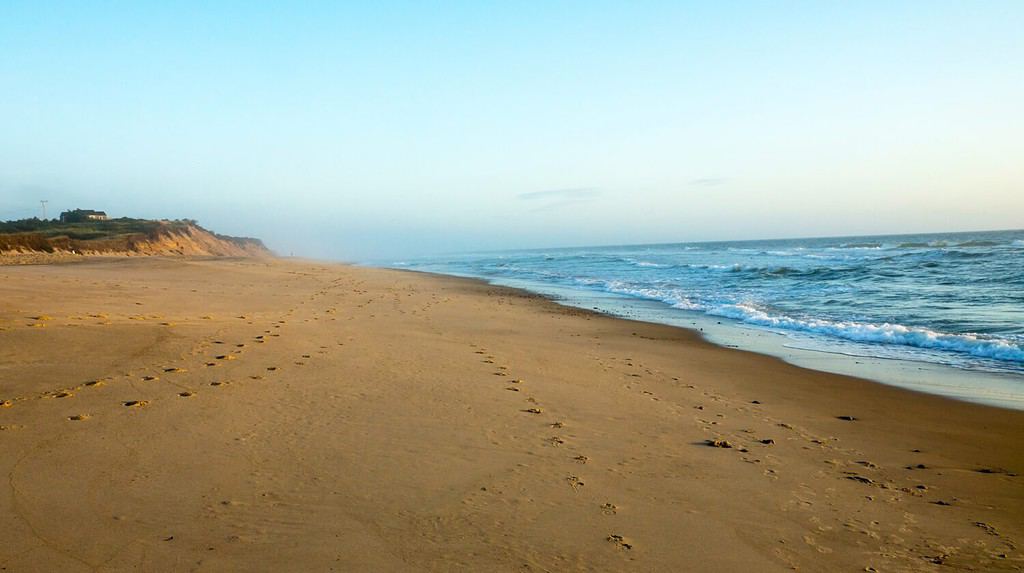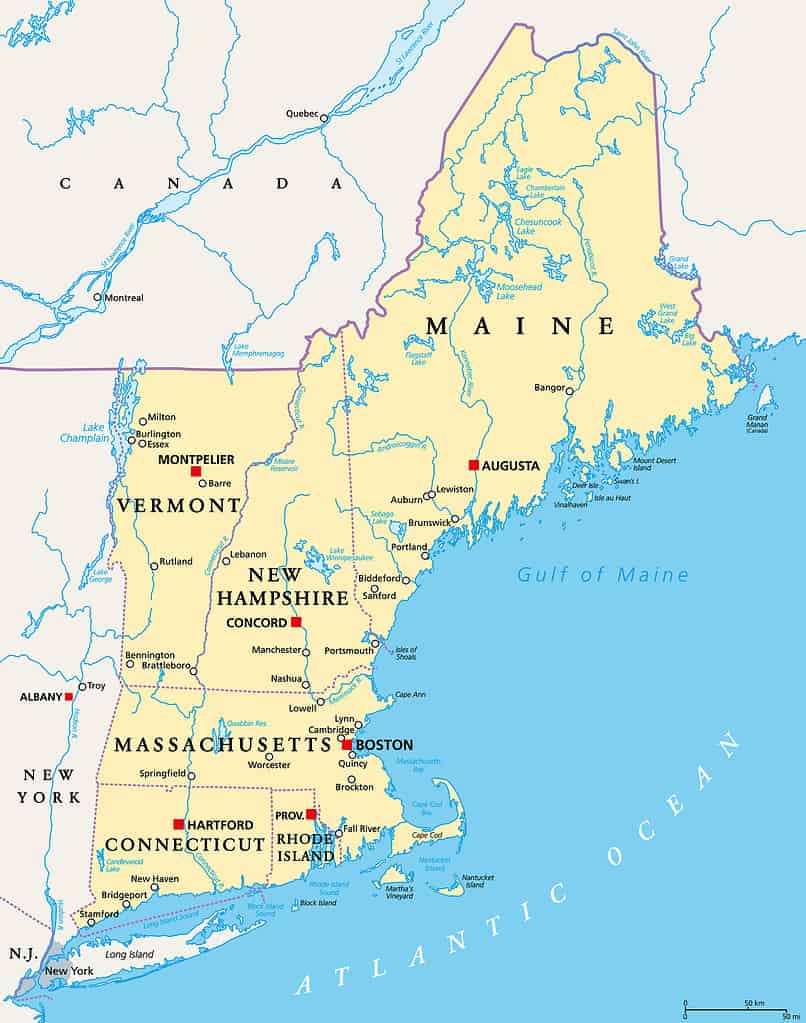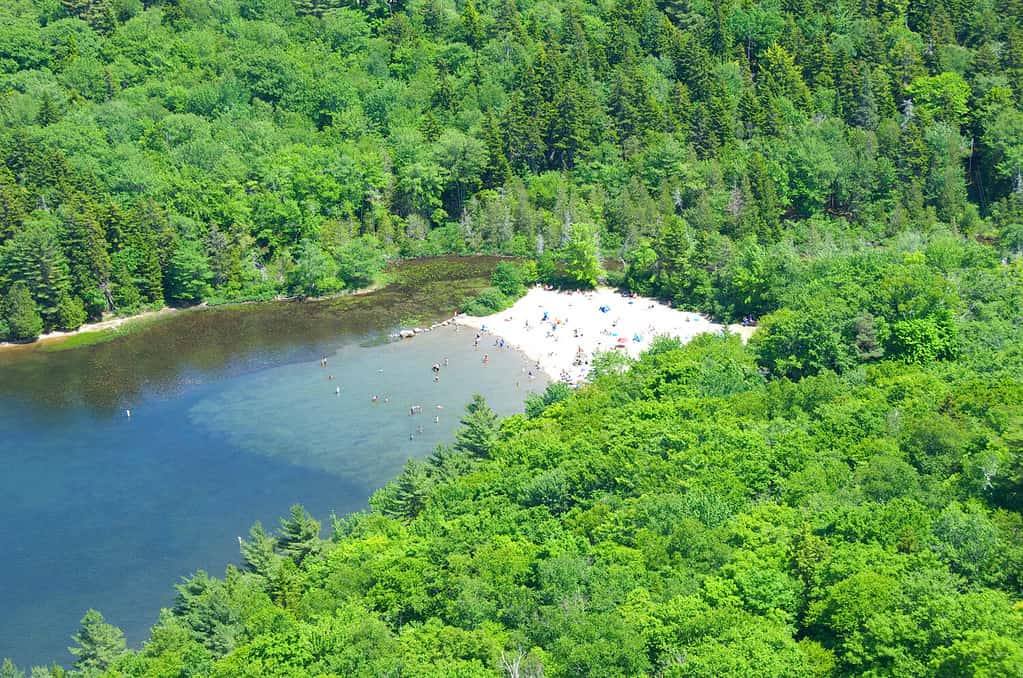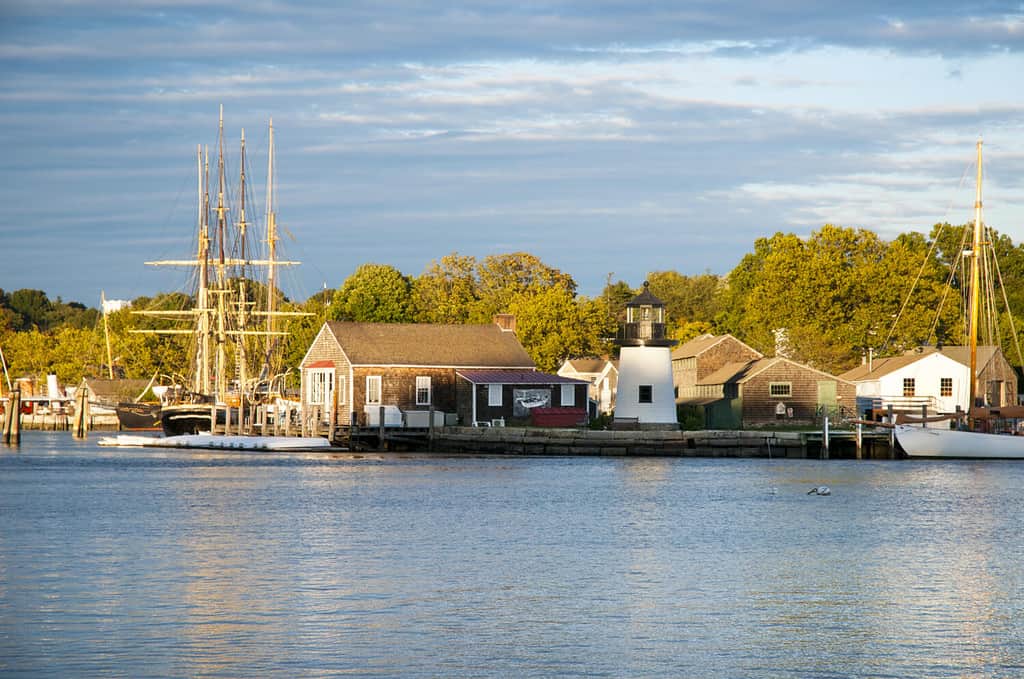New England is a beautiful region with a very interesting history. Many key events in the formation of the United States occurred across this area and today it still retains its intrigue. There are many fun places to visit and activities to do there, as well. But where is it exactly? This article will discuss the history of New England, its geography, noteworthy landmarks, and importantly, where it is located. So, where is New England? Let’s find out.
History
Colonial Period
The history of New England has deep roots in the interactions between Native American tribes and European colonists. Long before the arrival of Europeans, the region was home to various Native American groups, including the Wampanoag, Narragansett, Mohegan, Pequot, Abenaki, and Penobscot, among others. These tribes lived off the land, engaging in hunting, fishing, agriculture, and trade. They had established rich cultures and societies with unique traditions, languages, and customs.

English colonists arrived in America along the Massachusetts coast. Today, the state has a captivating coastline that lends to the regions natural beauty.
©Bruce Goerlitz Photo/Shutterstock.com
The turning point in New England’s history was in the early 17th century when English colonists arrived on the shores. The Pilgrims, seeking religious freedom, landed at Plymouth in 1620, establishing one of the first permanent English settlements in the area. The following years saw the establishment of other colonies, such as the Massachusetts Bay Colony in 1630, which attracted Puritans seeking religious tolerance.
Conflicts

The primary source of conflict between the colonists and the Native Americans was land control.
©iStock.com/Matthew Smith
The relations between the colonists and the Native American tribes were complex. While some interactions involved trade, many were conflicts over land and resources. The most infamous of these conflicts was the Pequot War of 1636-1638, which resulted in significant casualties and the dispersal of the Pequot tribe.
In 1675, tensions escalated further, leading to the devastating King Philip’s War. Metacom, also known as King Philip, the Wampanoag leader, led a pan-tribal alliance in a rebellion against the encroaching colonists. The war was brutal, resulting in the loss of thousands of lives on both sides. The colonists prevailed, and the Native American tribes’ power and land were severely diminished. Over the centuries, New England played a vital role in the American Revolution, with events such as the Boston Tea Party in 1773 becoming iconic moments of resistance against British rule. The region also became a center of maritime trade and industrialization, with cities like Boston and Providence becoming important economic hubs. Throughout the 19th and 20th centuries, New England continued to evolve, experiencing industrial growth, waves of immigration, and significant social and cultural changes.
Geography
New England is famous for its diverse and captivating geography. Comprising six states — Maine, New Hampshire, Vermont, Massachusetts, Rhode Island, and Connecticut — this picturesque region offers a rich tapestry of landscapes. The terrain is shaped by various geological formations, including mountains, hills, valleys, and coastal plains.

For an incredible hike, visit the Appalachian Trail on sunny day. Enjoy breathtaking views from White Mountains Franconia Ridge in New Hampshire.
©Jaminnbenji/Shutterstock.com
One of the most prominent geological features in New England is the Appalachian Mountain Range, which runs through the western parts of the region. The White Mountains of New Hampshire, a subset of the Appalachians, stand out as a major attraction and hold the distinction of being home to the tallest peak in the northeastern United States. In fact, Mount Washington rises to an impressive height of 6,288 feet (1,917 meters)! It has extreme weather conditions and breathtaking vistas.
Apart from the mountainous areas, New England’s geography encompasses a diverse range of habitats. The coastal plains and marshlands, stretching along the eastern edge, provide essential habitats for numerous bird species and marine life. The region is peppered with pristine lakes, rivers, and dense forests, making it a haven for wildlife and outdoor enthusiasts alike. The northernmost areas, particularly in Maine, boast vast stretches of rugged wilderness. These areas support unique flora and fauna adapted to colder climates.
Location

This modern map of New England portrays the 6 New England states situated in northeastern United States of America.
©Peter Hermes Furian/Shutterstock.com
New England is in the northeastern United States and consists of Maine, New Hampshire, Vermont, Massachusetts, Rhode Island, and Connecticut. The region borders the Atlantic Ocean to the east. To the north, it shares borders with the Canadian provinces of New Brunswick and Quebec. New England’s approximate latitude ranges from 41°N to 47°N and its longitude spans from 66°W to 73°W.
Landmarks
The Freedom Trail
As a region with a rich history and breathtaking landscapes, New England boasts several notable landmarks. One such landmark is the Freedom Trail in Massachusetts. This red-brick trail is 2.5 miles long in Boston and leads to 16 historically significant sites. This excursion offers a glimpse into the city’s revolutionary past.
Acadia National Park

Echo Lake Beach, as seen here from the top of Beech Mountain, is a great summer destination in Acadia National Park in Maine.
©khallyimages/Shutterstock.com
Another destination is Acadia National Park in Maine. This national treasure’s land is diverse and includes rocky shorelines, pristine lakes, and forested mountains. It is located along the Maine’s rugged coastline and is a breathtakingly beautiful and diverse natural haven. Encompassing over 49,000 acres, it offers a unique blend of picturesque landscapes, rocky shores, lush forests, and striking granite peaks.
The park offers a plethora of activities for nature enthusiasts and adventure seekers alike. Hiking is a popular choice, with trails catering to all skill levels. They lead visitors to awe-inspiring vistas like the summit of Cadillac Mountain, the highest peak on the U.S. East Coast. The park also provides opportunities for biking, birdwatching, kayaking, and stargazing, ensuring a memorable experience for everyone.

The red fox is one of several animal species that inhabit Acadia National Park.
©Giedriius/Shutterstock.com
Acadia National Park is home to a rich variety of wildlife. Visitors may encounter white-tailed deer, moose, red foxes, and various bird species, including peregrine falcons and bald eagles. The park’s coastal waters are teeming with marine life, making it a great spot for marine mammal sightings such as seals and whales.
The best time to visit Acadia National Park is from late spring to early fall. During this period, the weather is mild, and the park bursts into vibrant colors with blooming wildflowers and foliage. To avoid crowds, consider visiting in the shoulder seasons of late spring or early fall when the park is less crowded, but the beauty remains just as enchanting.
Other Places to Visit
New England offers a plethora of exciting places to visit and activities to indulge in, catering to a wide range of interests. For those seeking a vibrant nightlife experience, “Cheers” in Boston, Massachusetts, is a must-visit. Inspired by the renowned TV show, this iconic bar captures the charm and camaraderie that made “Cheers” a beloved series.
After going to “Cheers”, sports enthusiasts can revel in the electric atmosphere of a Boston Red Sox baseball game at Fenway Park. Interestingly, Fenway Park is the oldest Major League Baseball stadium still in use. Join the passionate fans in cheering on the home team and immerse yourself in the spirit of America’s favorite pastime.

The Mystic Seaport in Connecticut is a picturesque place to visit with a fascinating maritime history.
©Allan Wood Photography/Shutterstock.com
For a taste of New England’s maritime heritage, visit Mystic Seaport in Connecticut. This living history museum showcases a recreated 19th-century coastal village, tall ships, and maritime exhibits, providing an immersive experience of the region’s seafaring past.
Be sure to visit Maine’s historic Old Port district in Portland for a guaranteed fun experience. You can explore cobblestone streets, enjoy seafood, and browse boutiques. Furthermore, you can experience live music, nightlife, and scenic waterfront views for a memorable trip.
The photo featured at the top of this post is © Faina Gurevich/Shutterstock.com
Thank you for reading! Have some feedback for us? Contact the AZ Animals editorial team.







